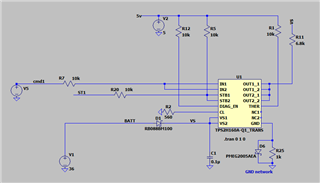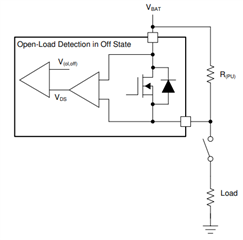Tool/software:
Hello,
in the following conditions:
DIAG_EN -> pull-up to 5V
IN1,IN2 -> shorted, pull-down
THER -> pull-up to 5V
ST1, ST2 -> shorted, pull-up to 5V
OUT1, OUT2 -> shorted, open load
we're measuring at different supply voltages (12V, 18V, 24V, 30V) always the same power consumption: 27mA.
I see on datasheet that the maximum standby current with diagnostic enabled NOT in open load mode is 6mA.
However, since 27mA is quite high current consumption for standby (at 30V the device is dissipating 0.9W), is this value correct?
Thanks,
Regards,
Andrea




